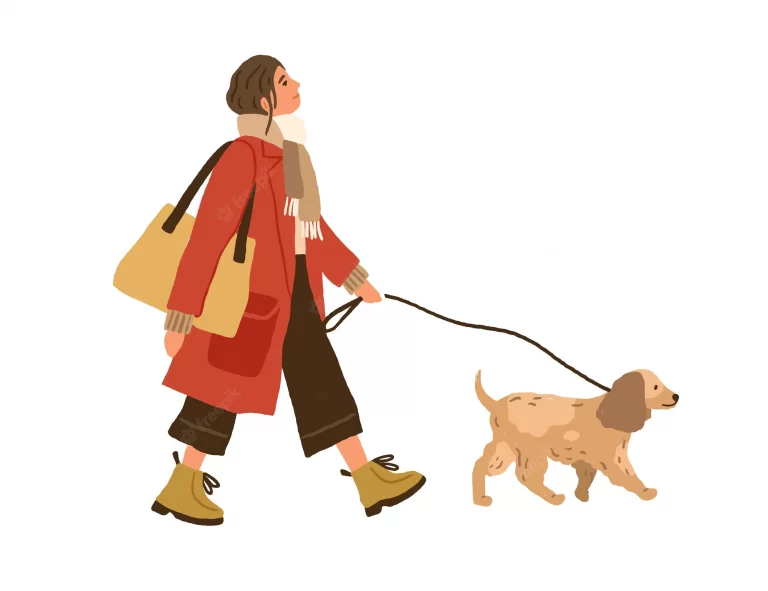How To Easily Teach Your Dog To Do Tricks
FULL DISCLOSURE: The links I share in this course ARE my affiliate links. This means I earn a commission, at no extra cost to you. In fact, sometimes you’ll get a discount or free credits just FOR using my link. 🙂
Did you know that dogs can do tricks?
Maybe you thought it was hard to teach them or that your dog could never learn them!
You can easily teach your dog to make the moves.
You can teach him to walk backward on command, take a bow, or do other fun tricks!
Read on to learn easy ways to teach your dog to do tricks!
Make Sure to Set Aside Time for Training
If you are going to try and teach your dog new tricks, you will need to set aside some time each day for training.
This is especially important if you want to teach your dog new behaviors that require more complex commands. When you first start training your dog, you can pick one or two behaviors you would like to teach your dog and focus on them.
Pick behaviors that your dog already does, like sitting, walking on a leash, or going to bed at a particular time. Your dog is already used to these behaviors and will be more likely to do under a new command.
Be Consistent and Firm When Training Dogs

Dogs are naturally curious creatures, so engaging your dog in fun training activities may be tempting.
Make sure to be consistent and firm when your dog is learning new behaviors.
If your dog is curious or excited when you first start training your dog, be firm and do not let your dog be distracted.
This will only confuse your dog and make it harder to teach her new behaviors.
Your dog will be more likely to learn new behaviors if she focuses on the task.
This may take a little more time and patience, but it will be worth it in the end.
Teach Your Dog Basic Moves Before Teaching More Complex Ones
Before you start teaching your dog more complex movements like the wave or the bow, teach your dog the basics.
This will make transitioning from one behavior to another easier for you and your dog.
When you start to teach your dog new moves, do a few of the simpler ones first. This will get your dog used to the commands and make him more comfortable with the new movements.
Do not Force Your Dog to Do Something She Is Not Ready For
Dogs are often eager learners, but they also have their own personalities. Some dogs are enthusiastic learners who are also eager to please. Others are more laid back and may need a little more time to get used to the idea of new commands.
If your dog is not yet comfortable with new commands, do not force her to do something she does not want to do. You can reward your dog with treats or praise if she does get used to a new command, but do not force her to do something she does not want to do.
With time and patience, your dog will be more likely to learn new behaviors when she is ready.
Use a Clicker or Other Trainer Toy When Teaching New Tricks
It is easy to get caught up in the excitement of teaching your dog new behaviors and forget that he may need a little patience, too.
Clicker
One way to help your dog stay calm while you are teaching new behaviors is to use a clicker or other trainer toy. A clicker is a small plastic tool that makes a clicking sound when your dog performs a behavior correctly.
Using a clicker makes corrections and training sessions easier as long as you train her how to use one.
Trainer Toy
A trainer toy can help your dog stay calm when you are teaching new commands. A trainer toy does not make a sound but has a shape or texture your dog likes.
This helps calm your dog down and makes it easier for you to teach new behaviors.
Celebrate Success with your Dog After He Learns a Trick

Once your dog learns a new behavior, give her a treat, a pat on the head, or a verbal “good job.” Make a big deal of each new step your dog makes toward learning a new behavior.
Celebrate with your dog when he is using the new command or doing something related to it. Celebrating your dog's success and reminding him what he has learned will help you stay focused on the task at hand.
Taking a bow
Learning how to make your dog take a bow can be a fun trick for your pet. But before you can begin training your dog to take a bow, you need to know some helpful tips. Here are some of them:
– If you want to make your dog bow, you can use a clicker to reinforce the action
– You can use a treat to reward your dog after the bow.
– Practice the bow command several times a day.
– Start off slow. Your dog will learn the bow behavior in small steps.
– Start by teaching your dog to bow when asked. To teach your dog to perform the bow, make sure you use the name of the trick to encourage your dog to perform it. For example, when you say “take a bow,” keep your hand near the dog's tummy and give him a treat as he bows.
Repeat this step a few times, and gradually move your hand out of the way.
Walking Backwards On Command
Walking backward on command is a basic obedience skill you can teach your dog if they are already familiar with the heel command. Simply follow the hand motion and reward your dog when they step backward.
Start by walking backward a few steps and then increase the distance.
It is important to remember that some dogs walk backward out of fear. They think that by walking backward, they can get away from a threatening situation.
For example, if they are afraid of a doorway, they may move diagonally so they can show more sides. So make sure that when you are teaching them to do this trick, you are being gentle and giving them lots of treats.
If you do not see immediate improvement after several training sessions, you may need to use a more enclosed area.
If your dog keeps moving away from the command, you may need to move training sessions to a more secure area. It is important not to get frustrated with the slow response time; try focusing on the task for a few minutes at a time.
Walking backward on command can be a helpful trick to teach your dog. It is a fun exercise, and many dogs will pick it up quickly.
It is important to keep training sessions fun and consistent. Make the command simple and consistent so that your dog is not confused.
Standing Up On Command

If you are looking for a fun way to train your dog, try teaching it to dance on command.
It is not hard, and it should not take very long. However, make sure to spend at least 5-10 minutes each day. Ideally, you should build on your dog's previous training and use shorter training sessions as you progress. For example, it may take your dog three or four sessions to learn to raise its front legs.
In addition to verbal commands, you can teach your dog to dance on command using hand gestures. For instance, hold a treat in front of your dog's nose and signal the start of a dance.
First, teach your dog to stand up. This can take a few training sessions, but it will help your dog develop strong legs and core muscles.
With a consistent training schedule, your dog will get better over time. You can also teach him to spin his body or use his forearms as part of the choreography.
Learning Canine Freestyle
Learning canine freestyle dance requires patience and dedication. It can be difficult for a dog to perform a full routine, but a reward-based approach produces the best results.
You will need to teach each trick individually, and you will need to make sure that each trick is performed in the same sequence.
Dogs are generally very smart and fast learners.
This skill is based on following the choreography, and they must be able to move in time with the music.
Poodles and Dachshunds are excellent candidates for this type of training. But there are many other breeds of dogs that are also good dancers.
Conclusion
Dogs are naturally curious creatures, so it makes sense that they are interested in learning new behaviors.
Teaching your dog new tricks and exercises is a great way to strengthen your bond with your pet and make her feel more confident in her abilities.
If you are willing to put in the time and patience to teach new behaviors to your dog, you will have a much better experience.
After you have taught your dog to do tricks you can show them off at their next birthday party!







